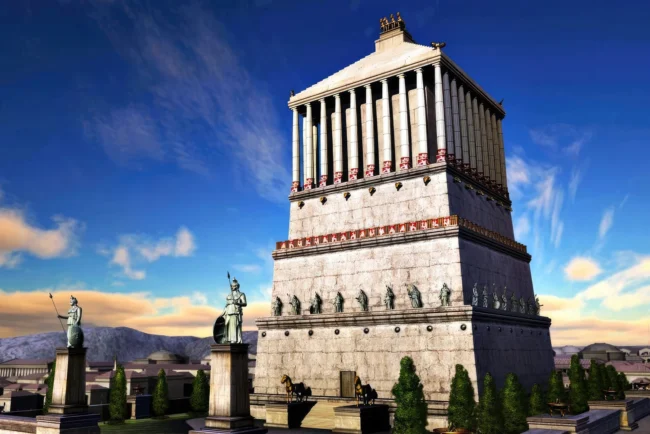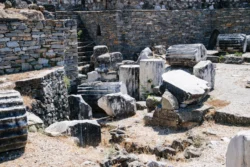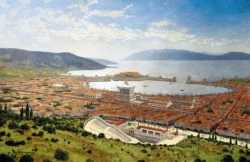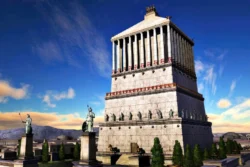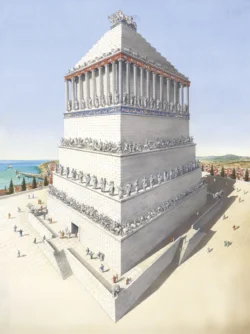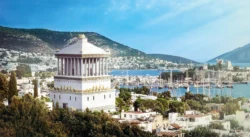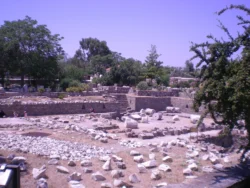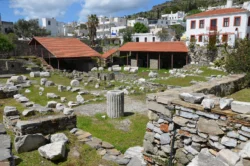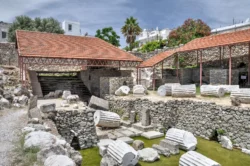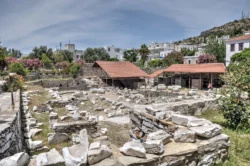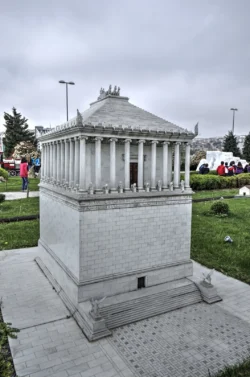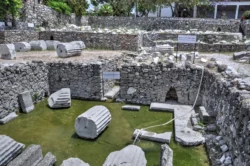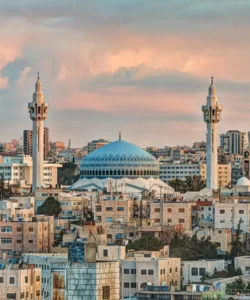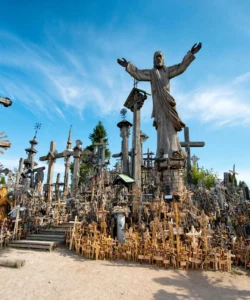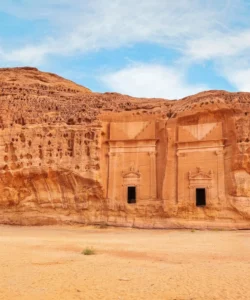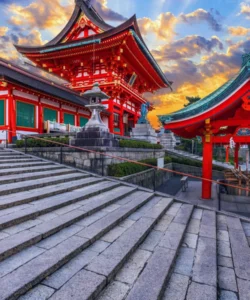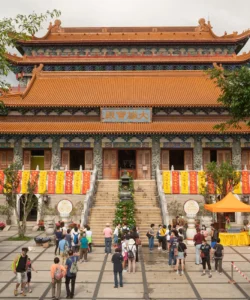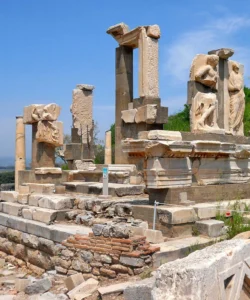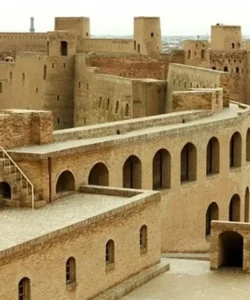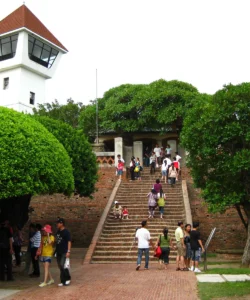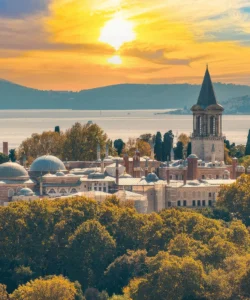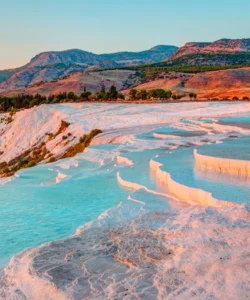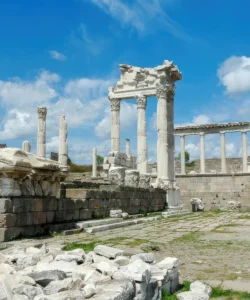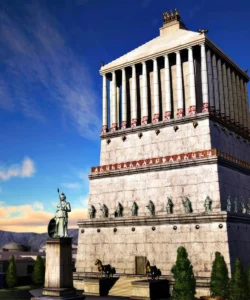The Mausoleum at Halicarnassus, or the Tomb of Mausolus, was an ancient tomb built between 353 and 351 BCE in Halicarnassus (modern-day Bodrum, Turkey) for Mausolus, an Anatolian from Caria and a satrap in the Achaemenid Persian Empire, and his sister-wife Artemisia II. It was considered one of the Seven Wonders of the Ancient World due to its immense size, intricate architectural design, and elaborate sculptures.
Listen to an introduction about Mausoleum at Halicarnassus
Name and Address
- Name: The Mausoleum at Halicarnassus (Ancient Greek: Μαυσωλεῖον τῆς Ἁλικαρνασσοῦ; Turkish: Halikarnas Mozolesi)
- Address: The archaeological site is located in Tepecik, 48440 Bodrum/Muğla, Türkiye (Turkey).
How to Get There
The site of the Mausoleum is located in modern-day Bodrum, a popular tourist destination in Turkey, making it relatively accessible.
- By Air: The closest international airport is Milas-Bodrum Airport (BJV), approximately 36 km (22 miles) from Bodrum city center. From the airport, you can take a taxi, shuttle service, or rent a car to reach Bodrum.
- By Road: Bodrum is well-connected by intercity buses from major Turkish cities like Istanbul, Izmir, and Ankara. Once in Bodrum, the Mausoleum site is about a 15-minute walk from the main bus station, or you can take a taxi or local minibusses (dolmuş).
- By Sea: The Port of Bodrum has ferry connections with several Greek islands, including Kos and Rhodes, allowing for sea travel to the city center.
- On-Site: The ruins are located on a hill overlooking the city and harbor. The site is not very large, and you can explore it on your own. Comfortable shoes and water are recommended, especially during warmer months. The site is generally open every day except Mondays.
Landscape and Architecture
The Mausoleum was a monumental tomb that blended Greek, Lycian, and Egyptian architectural styles, standing as a testament to the wealth and power of Mausolus. Though largely destroyed by earthquakes, its foundations and scattered fragments remain at the original site, with many significant sculptures housed in the British Museum.
- Overall Structure: The Mausoleum stood approximately 45 meters (148 feet) tall. It consisted of three main parts:
- Rectangular Base/Podium: A large stone platform, approximately 38 meters (125 feet) by 32 meters (104 feet), decorated with friezes and reliefs depicting mythological scenes, including battles between Greeks and Amazons.
- Colonnade (Pteron): Above the base, there were 36 Ionic columns (9 on each side) that supported the roof and created a colonnaded walkway. Numerous free-standing statues of gods, goddesses, and legendary warriors adorned the spaces between the columns and on the podium steps.
- Stepped Pyramid Roof: The structure was capped with a stepped pyramid roof, consisting of 24 steps, which tapered towards the summit.
- Chariot Sculpture: At the very top of the pyramid stood a massive marble sculpture of a quadriga (four-horse chariot) with statues of Mausolus and Artemisia, symbolizing their eternal journey.
- Materials: The primary material used was gleaming white marble, quarried locally, which contributed to its elegance and durability.
- Artists: Designed by Greek architects Satyros and Pythius of Priene, the Mausoleum was adorned with elaborate sculptures by four renowned Greek sculptors: Scopas (east side), Bryaxis (north side), Leochares (west side), and Timotheus (south side).
- Destruction: The Mausoleum stood for nearly 1,800 years, surviving various conquests, until a series of earthquakes between the 11th and 15th centuries CE caused its collapse. Much of its stone was later reused by the Knights of St. John to fortify their nearby Bodrum Castle (Castle of St. Peter).
What Makes It Famous
- Origin of the Term “Mausoleum”: The most enduring legacy of this wonder is the word “mausoleum” itself, which is derived from Mausolus’s name and has become a generic term for any grand, monumental tomb.
- Architectural Grandeur and Artistic Excellence: Its immense scale, innovative blend of Greek, Lycian, and Egyptian architectural styles, and the exquisite sculptures by master Greek artists made it an unparalleled funerary monument.
- Symbol of Power and Devotion: Built by Artemisia II in honor of her deceased husband and brother, Mausolus, it symbolized their power, wealth, and the depth of her devotion.
- Long-standing Wonder: It was the second-longest surviving Ancient Wonder (after the Great Pyramid of Giza), standing for over a millennium and a half.
- Historical Significance: It was the principal architectural monument of Halicarnassus, the capital of Caria, and reflected the Hellenistic culture and artistic achievements of the period.
Differences from Some Other Wonders
- Namesake for a Type of Structure: Unlike other wonders, the Mausoleum at Halicarnassus gave its name to an entire category of buildings (mausoleums), a unique linguistic and architectural legacy.
- Tomb for a Mortal Ruler: While some wonders were temples dedicated to gods (like the Temple of Artemis) or structures of immense public utility, the Mausoleum was primarily a tomb built to honor a mortal ruler, albeit one of great power and influence.
- Scattered Remains and Reused Materials: While some wonders have more substantial ruins or are still largely intact (like the Great Pyramid), the Mausoleum’s stones were extensively reused in the construction of Bodrum Castle, meaning its original form is largely reconstructed from historical accounts and scattered fragments. This contrasts with sites where the original structure, even in ruins, is more immediately discernible.
- Artistic Over Size: While certainly large, ancient accounts emphasize the artistic merit and sculptural decoration of the Mausoleum as a primary reason for its wonder status, rather than just its sheer size, which was a key factor for structures like the Pyramids.
Mausoleum at Halicarnassus Photos:
